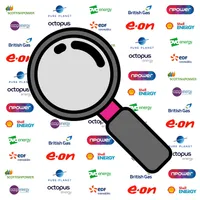35% of people don’t understand their energy bills – we explain the key terms

New research from green energy supplier Bulb has revealed that many Brits do not understand key terms on their energy bills. In particular, it has revealed that a quarter of Brits under 35 still turn to their parents for help understanding them.
As a result, more than half of Brits (52%) believe that they need more resources from their energy supplier in order to help them properly understand their bills. In addition, the survey revealed that almost one in five Brits (17%) have never checked their energy meters and one in ten have never checked whether they’re on the best tariff.
- Start saving on your energy bills today: See the best deals in your area now
The language of bills confuses millions
Despite kWh (kilowatt hours) being key to a customer’s spending, 19% of those surveyed said they didn’t understand the term. This equates to nearly 13 million adults in Britain.
However, other common terms used on bills are also deeply misunderstood. 23% of respondents said they didn’t know what CV (calorific value) was and 19% were unsure what the term ‘tariff’ meant.
The top five misunderstood terms were:
- Calorific Value (CV)
- Meter point administration number (MPAN)
- Meter point reference number (MPRN)
- Kilowatt hour (kWh)
- Actual reading
What the key terms mean
If you’re trying to save money on your energy bills and reduce your carbon footprint, then it’s vital that you understand the information on your bill. To help, here’s a guide to each of the five key terms:
Calorific value - This is a measure of the available heat energy. It varies from day to day and region to region.
Sign up for breaking news, reviews, opinion, top tech deals, and more.
Meter point administration number (MPAN) – This is a unique number for the electricity meter in your property. It’s sometimes called an Electricity Supply Number.
Meter point reference number (MPRN) – Similar to your MPAN, this is a unique number for your gas meter.
Kilowatt hour (kWh) – A kWh (kilowatt hour) counts as a ‘unit’ of energy. To calculate your bill, your energy use in kWh is multiplied by your unit rate, which depends on your tariff.
Actual reading – If you have submitted a reading or your supplier has sent someone to take a reading, then this will appear as ‘actual’ on your bill. If not, you will have an estimated reading, which is your assumed usage. This will not be as accurate as an actual reading.
Switch to make savings
Once you understand the information on your energy bills, you can make an informed decision about whether the tariff you’re on is right for you.
Crucially, you can also use the data on your bill to see whether a different supplier or tariff is better for you. By running an online energy comparison using some of the information on your bill, you’ll be shown all the best energy deals in your area from the country’s best energy suppliers. Plus, you’ll also be shown exactly how much you could save by switching to each. If you’re on an expensive standard variable tariff, you could save hundreds of pounds.
Find the best energy deal for your home
TechRadar has partnered with GoCompare to help you find the best energy deals in your area. Our energy comparison tool takes less than five minutes to use, and could save you hundreds on your energy bills. Save money now

Tom is a freelance copywriter and content marketer with over a decade of experience. Originally from an agency background, he is proud to have worked on campaigns for a number of energy providers, comparison sites and consumer brands.
